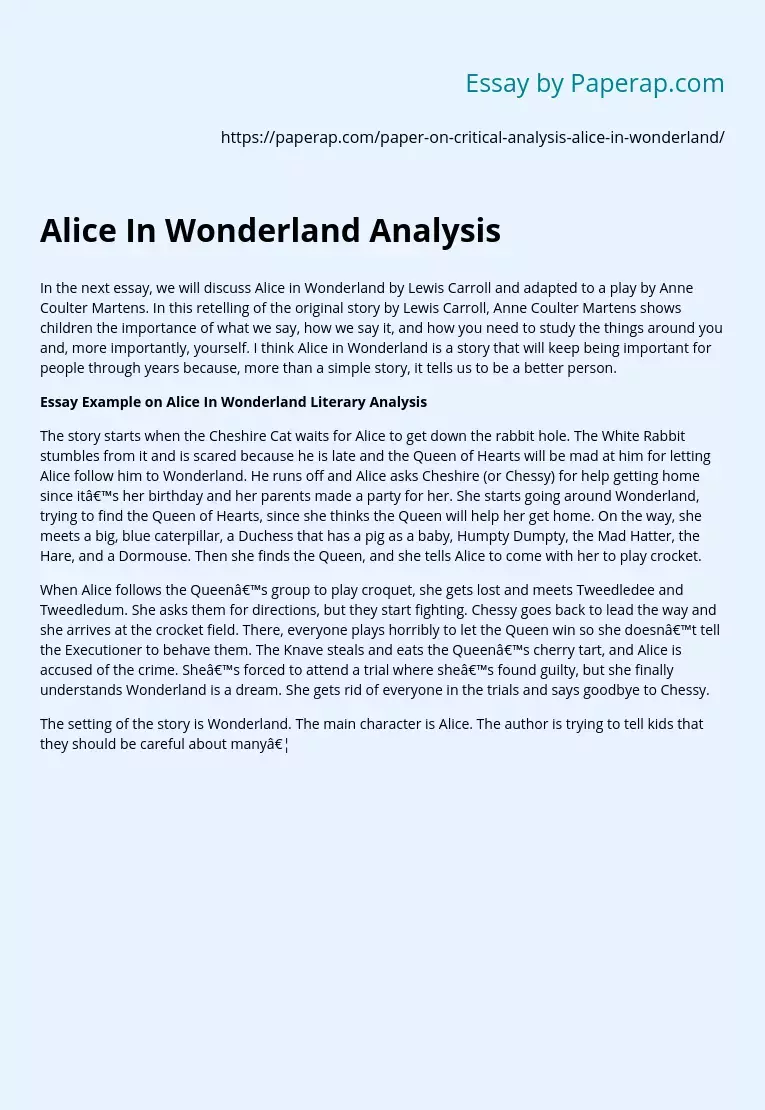Alice In Wonderland Analysis
In the next essay, we will discuss Alice in Wonderland by Lewis Carroll and adapted to a play by Anne Coulter Martens. In this retelling of the original story by Lewis Carroll, Anne Coulter Martens shows children the importance of what we say, how we say it, and how you need to study the things around you and, more importantly, yourself. I think Alice in Wonderland is a story that will keep being important for people through years because, more than a simple story, it tells us to be a better person.
Essay Example on Alice In Wonderland Literary Analysis
The story starts when the Cheshire Cat waits for Alice to get down the rabbit hole. The White Rabbit stumbles from it and is scared because he is late and the Queen of Hearts will be mad at him for letting Alice follow him to Wonderland. He runs off and Alice asks Cheshire (or Chessy) for help getting home since it’s her birthday and her parents made a party for her.
She starts going around Wonderland, trying to find the Queen of Hearts, since she thinks the Queen will help her get home. On the way, she meets a big, blue caterpillar, a Duchess that has a pig as a baby, Humpty Dumpty, the Mad Hatter, the Hare, and a Dormouse. Then she finds the Queen, and she tells Alice to come with her to play crocket.
When Alice follows the Queen’s group to play croquet, she gets lost and meets Tweedledee and Tweedledum.
She asks them for directions, but they start fighting. Chessy goes back to lead the way and she arrives at the crocket field. There, everyone plays horribly to let the Queen win so she doesn’t tell the Executioner to behave them. The Knave steals and eats the Queen’s cherry tart, and Alice is accused of the crime. She’s forced to attend a trial where she’s found guilty, but she finally understands Wonderland is a dream. She gets rid of everyone in the trials and says goodbye to Chessy.
The setting of the story is Wonderland. The main character is Alice. The author is trying to tell kids that they should be careful about many…
Alice In Wonderland Analysis. (2019, Nov 27). Retrieved from https://paperap.com/paper-on-critical-analysis-alice-in-wonderland/

